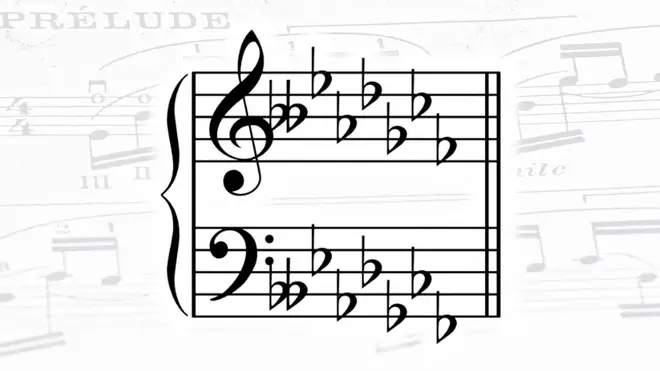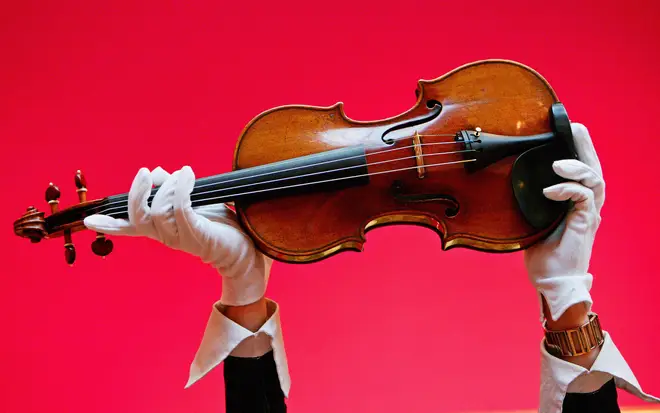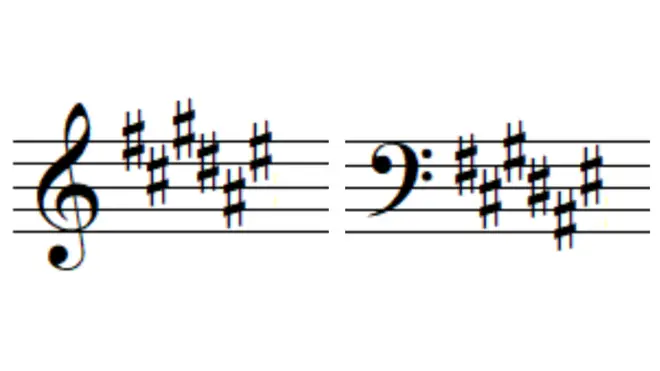On Air Now
Early Breakfast with Lucy Coward 4am - 6:30am
12 October 2023, 12:37

Each piece of music, be it a song, symphony or concerto, is written in a specific ‘key’. But what do we mean when we refer to a musical key, why are there 24 of them, and how do composers choose which key to write in?
All music is written in a specific key. Or at least starts in a specific key, before the melody tangentially and beautifully pulls the music into the realm of a new key it’s suddenly seemingly more at home with.
But what do we mean when we say ‘key’, and why are they important to know about in music? Let’s unlock the mystery…
In Western classical and pop music, the ‘key’ a piece of music or song is in refers to the main notes, scales (sequences of set combinations of pitches and intervals) and chords that it’s built from.
Chords can be understood as combinations of notes played at the same time, derived from all of the major and minor scales, and they are the fundamental basis of keys.
Every key is based on a ‘tonic’ or key note, and built up from that note is a ‘tonic triad’, or main three-note chord, which sounds harmonious and natural in the context of that key.
Other chords can be built around that ‘tonic’ note and lead on in a melodic way from the ‘tonic triad’, building out passages of music that is then deemed to be ‘in’ that key.
This system of building chords around ‘tonic’ notes and ‘tonic triad’ chords is called ‘tonality’ or tonal music.
Read more: Scientists say this major piano chord can help cure nightmares

Hear the extraordinary sound of a piano with no black keys!
Each key has a key signature, which is an annotation at the start of a score, or instrumentalist’s individual musical part.
A key signature is built from either a certain number of sharps, or a certain number of flats, which musicians learn and recognise as indications of the different keys.
As well as telling the musician what key a piece is in, the number of sharps or flats (and where on the stave they are placed) reminds the musician to play the right notes throughout the piece, and so remain in the right key throughout.
Based on the fundamental rules of Western music, established over hundreds of years, there are traditionally a certain number of keys and key signatures possible.
Read more: What’s the difference between a sharp and a flat note?
There are 24 different keys possible in Western music.
This is because there are traditionally a total of 12 notes used in traditional Western music: C, C#/D♭, D, D#/E♭, E, F, F#/G♭, G, G#/A♭, A, A#/B♭, B.
These 12 notes played in order form the ‘chromatic scale’. And the 12 notes of the chromatic scale can all be used as a starting point from which to build a key through this ‘tonic’ and ‘tonic triad’ relationship we see in tonal music.
From these 12 notes can be produced either a ‘major key’, which to modern Western ears typically sounds merry and hopeful, or a ‘minor key’, which typically sounds dramatic and mournful. So 12 notes doubles to become 24 possibilities.
Read more: Why are there only 12 notes in classical music?
A great way of visualising the 24 keys of Western music is the circle of fifths, which depicts the 12 notes of the chromatic scale, their minor and major key signatures, and how they relate to each other in order.
You’ll see the 12 different key signatures, each applied to both the major and the minor, and how they generate the 24 possible keys.
Read more: What is the circle of fifths?

Instruments are naturally built and tuned to certain keys, based on how their size and the placement or design of their note-changing mechanism – i.e. finger holes or strings – influence the pitches it produces.
The fewer the different notes an instrument can produce, the fewer opportunities to change key it has.
A way of telling what key an instrument is in is how it sounds playing the C major scale, which is a scale without any sharps or flats (the white notes of a piano).
Instruments like the flute, the violin and the piano are all examples of C instruments because their C major plays in that key.
Instruments, like the clarinet, trumpet and tenor saxophone, that are B-flat instruments are so-called because their C major scale, as played, actually sounds like B flat major.
Other keys that common instruments can be in include E flat (the alto saxophone) and F (the horn).
Non-C instruments are known as transposing instruments.

Whether a key is major or minor makes it sound different, with major keys typically sounding hopeful and bright, and minor keys sounding sad and dramatic.
Different keys also have different characteristics, based on the context of different instruments playing them.
The timbre of an instrument (or voice) can make certain keys sound different from others. A piece in C major, for example, may resonate differently than one in E flat major due to the design and range of the instrument.
Before equal temperament, which is turning the notes of any scale to have equal distances between them, became established in Western music, different intervals were slightly different sounds, and so the chords – and therefore keys – had a different ‘feel’ as well.
This is known as ‘key colourisation’, and has influenced musical thinking and appreciation around keys and their characteristics.
Read more: Modes – what are they and how do I use them?
In 1806, poet Christian Schubart wrote descriptions for what each key could represent in Ideen zu einer Aesthetik der Tonkunst (Ideas for an aesthetics of musical art).
C major (no sharps or flats) is “completely pure. Its character is: innocence, simplicity, naïvety, children's talk,” whereas D flat major is “a leering key, degenerating into grief and rapture” and D sharp minor is frankly bleak: “Feelings of the anxiety of the soul's deepest distress, of brooding despair, of blackest depression, of the most gloomy condition of the soul. Every fear, every hesitation of the shuddering heart, breathes out of horrible D# minor. If ghosts could speak, their speech would approximate this key.”
It does have six sharps in the key signature, tricky for anybody…

There are several ways composers, writing music today or in the past, pick the keys they write their music in.
One reason is to suit the instrument, or combination of instruments, they are writing for. Based on what key that instrument is naturally in, it will find some keys, especially the key it is in, easier to play than others.
Think of voices, too, here. A composer will write music that’s comfortable – and possible – for certain voice types to sing, based on their range.
The timbre of the instrument (or voice) can come into this again: for some instruments, a piece in C major may resonate differently than one in E flat major due to the design and range of the instrument. A clarinet, for example, has a “break”, which is the transition between its ‘chalumeau’ low register and ‘clarion’ middle register, and experienced composers for the clarinet may factor this transition in, avoiding it or even accentuating it, when choosing keys for their melodies.
The instrument’s key, too, can be a deciding factor. Certain keys may fit more easily under the fingers on different instruments, and a composer will lean towards accommodating that instrument where possible.
A composers’ method of composing also comes into play: if they are writing music at the piano, for example, with its set pattern of white notes and black notes (sharps and flats), they may tend to start and write around a certain note that is comfortable or natural for them to start from.
American composer and lyricist Irving Berlin has been remembered as composing only in F sharp major because that was where he was used to working on the piano.
Quiz: Which key signature are you?

Watch this stunning performance of Jingle Bells in a minor key
However they choose their keys, composers over time do seem to have had their favourites.
Beethoven is thought to have favoured C minor, especially for his more turbulent and emotive works (Beethoven’s Fifth Symphony is in C minor), which are also some of the works he’s most famous for. Mozart inversely is famous for writing a big portion of his music in major keys (only two of his over 50 symphonies are in a minor key).
Many of Bach’s significant works are D minor, including the Art of Fugue BWV 1080, and the ‘Chaconne’ from the Sonata for Solo Violin BWV 1004.
Several composers wrote series of works containing pieces in every key, for example Chopin and his 24 preludes for solo piano which cycle through each of the key signatures, and Bach’s Well-Tempered Clavier, or 48 Preludes and Fugues, which are two sets of pieces for the keyboard written in every minor and major key.
Why choose one when you can enjoy them all?